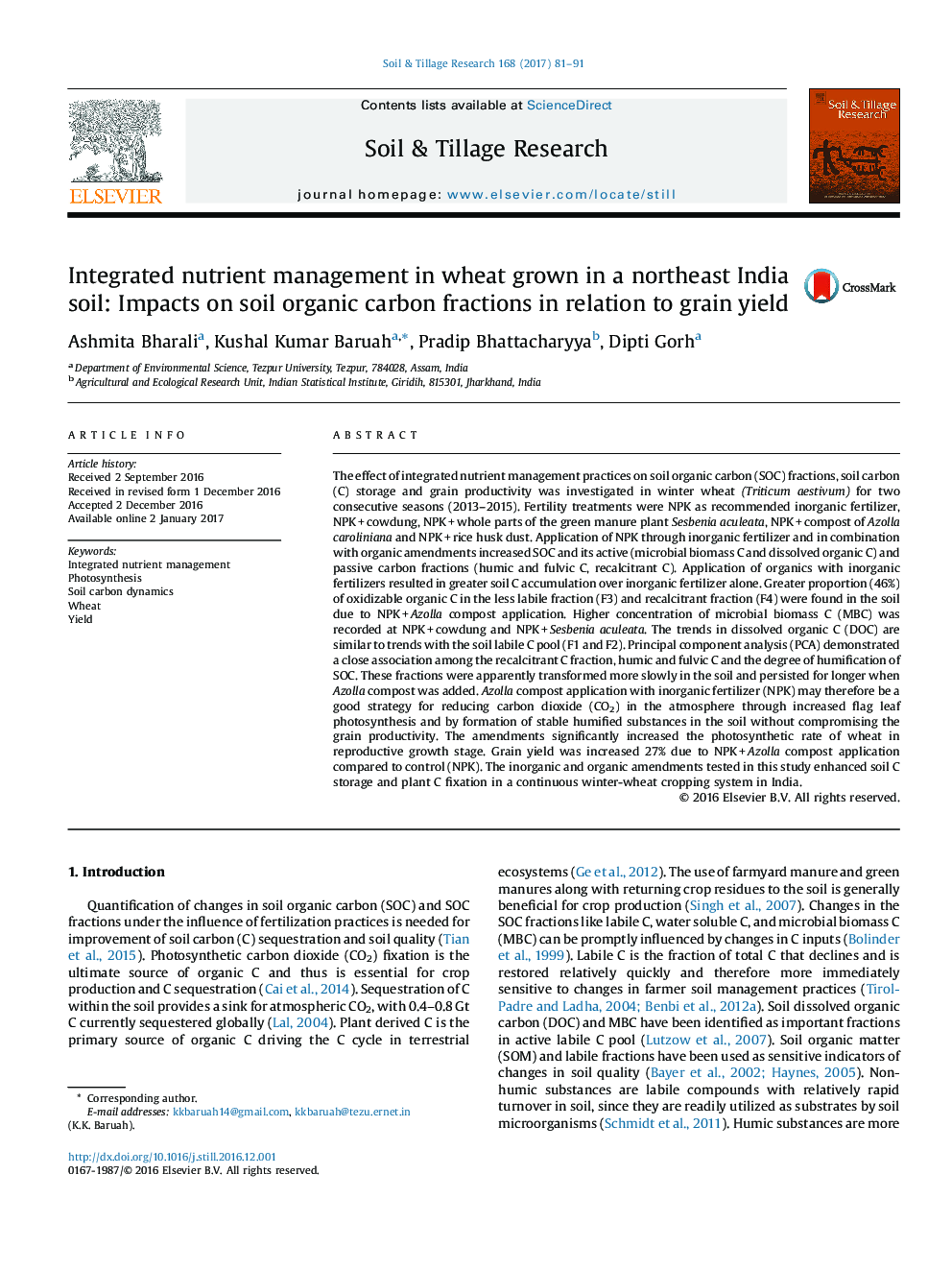| کد مقاله | کد نشریه | سال انتشار | مقاله انگلیسی | نسخه تمام متن |
|---|---|---|---|---|
| 4927552 | 1431835 | 2017 | 11 صفحه PDF | دانلود رایگان |
- Effects of integrated nutrient management on photosynthesis, wheat grain yield and soil carbon fractions were investigated.
- The amendments had significant impact on photosynthesis of wheat plants at the reproductive stage.
- An increase of 27% grain yield due to Azolla compost application is considered as significant finding of the present study.
- Azolla compost application in soil had noticeable influence on non-labile and recalcitrant carbon fractions.
- Recalcitrant, humic and fulvic carbon fractions can persist in soil for longer duration and are associated with long term carbon sequestration.
The effect of integrated nutrient management practices on soil organic carbon (SOC) fractions, soil carbon (C) storage and grain productivity was investigated in winter wheat (Triticum aestivum) for two consecutive seasons (2013-2015). Fertility treatments were NPK as recommended inorganic fertilizer, NPKÂ +Â cowdung, NPKÂ +Â whole parts of the green manure plant Sesbenia aculeata, NPKÂ +Â compost of Azolla caroliniana and NPKÂ +Â rice husk dust. Application of NPK through inorganic fertilizer and in combination with organic amendments increased SOC and its active (microbial biomass C and dissolved organic C) and passive carbon fractions (humic and fulvic C, recalcitrant C). Application of organics with inorganic fertilizers resulted in greater soil C accumulation over inorganic fertilizer alone. Greater proportion (46%) of oxidizable organic C in the less labile fraction (F3) and recalcitrant fraction (F4) were found in the soil due to NPKÂ +Â Azolla compost application. Higher concentration of microbial biomass C (MBC) was recorded at NPKÂ +Â cowdung and NPKÂ +Â Sesbenia aculeata. The trends in dissolved organic C (DOC) are similar to trends with the soil labile C pool (F1 and F2). Principal component analysis (PCA) demonstrated a close association among the recalcitrant C fraction, humic and fulvic C and the degree of humification of SOC. These fractions were apparently transformed more slowly in the soil and persisted for longer when Azolla compost was added. Azolla compost application with inorganic fertilizer (NPK) may therefore be a good strategy for reducing carbon dioxide (CO2) in the atmosphere through increased flag leaf photosynthesis and by formation of stable humified substances in the soil without compromising the grain productivity. The amendments significantly increased the photosynthetic rate of wheat in reproductive growth stage. Grain yield was increased 27% due to NPKÂ +Â Azolla compost application compared to control (NPK). The inorganic and organic amendments tested in this study enhanced soil C storage and plant C fixation in a continuous winter-wheat cropping system in India.
Journal: Soil and Tillage Research - Volume 168, May 2017, Pages 81-91
